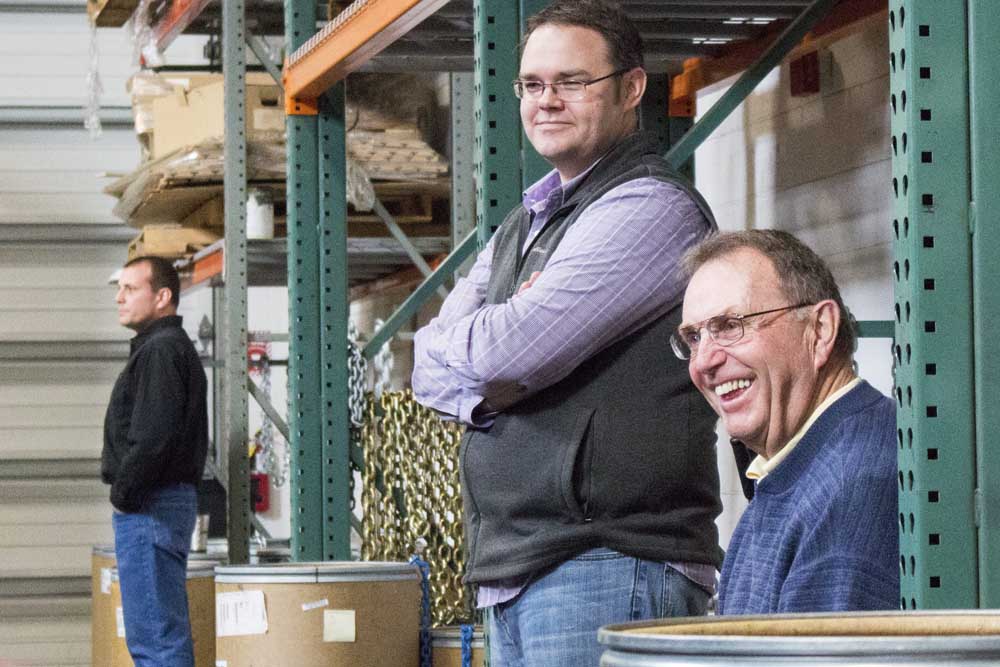Terry’s Plumbing solves vintage plumbing woes
Published 5:00 pm Saturday, July 31, 2010
Terry’s Plumbing in Astoria has been helping customers sort out plumbing problems for almost two decades. Owner Terry Oien has even more experience than that: Before he opened his own business he worked as a union plumber in the region, so his experience in the plumbing trade totals 33 years.
Trending
His business is an “all around” plumbing shop, doing residential and commercial plumbing work, much of it on newer homes. In communities like Astoria and Gearhart, however, he has customers who need help with plumbing issues in vintage dwellings.
“When you step into a three-story Victorian home, and people are still living in the house, you need to be extremely careful,” he said. “First, do no harm.”
| Terry Oien, owner of Terry’s Plumbing in Astoria, has been working in the plumbing trade for more than three decades. Photo: Joanne Rideout |
He said older homes may have antiquated equipment that needs replacing, but historic dwellings require a delicate approach with preservation in mind, and this often means protecting original walls, plaster and flooring. Such concerns prevent homeowners from simply agreeing to tear out whatever’s in the way to get at old pipes.
Trending
He said it’s paramount for a plumbing professional to find out what the homeowners want, and what they don’t want.
“You really have to listen to people,” he said. “Let them tell you what they expect and what they are looking for.”
He said sometimes he has to assess the feasibility of a project – whether it’s even possible to accommodate a homeowner’s vision in an older dwelling. Sometimes space is too tight to accommodate new plumbing, and modern code prohibits some configurations that were commonplace decades ago.
Oien said modern plumbing pipe is plastic, and that can create issues in older dwellings that have wooden walls instead of sheetrock.
“There are noise issues,” he said, explaining that water gurgles audibly through plastic pipes in a way that doesn’t happen with older, cast iron plumbing. If noise abatement is an issue for homeowners, he can sometimes install cast iron piping instead. Wooden walls don’t muffle water noise in pipes as well as sheetrock because it is less dense.
“Sometimes insulating will help,” he said. “Or we revert back to older technology.”
Sometimes it’s necessary to replace older toilets, which use a lot of water compared to newer models.
“Modern toilets flush with about 1.6 gallons of water,” he said. “Old toilets can use up to seven gallons per flush.”
He said many homeowners who want a vintage look in their fixtures choose new plumbing that meets modern code standards, but looks antique.
“Kohler is one brand that does that,” he said. “It looks like it would fit in that era.”
Oien explained some of the problems that can arise with very old homes that were designed without modern conveniences in mind.
“Frequently homes that are 100 years old didn’t have plumbing indoors initially,” he said. “Bathrooms were installed in the 1920s and 30s. So sometimes you see plumbing on the outside walls of homes. It was a retrofit.”
Plumbers who are making modifications to install new pipes in places where there were none before need to be very careful.
“Mistakes can get you into trouble,” he said, referring to the need to assess the location of load bearing walls and beams. “You can structurally weaken a home if you’re not careful,” he said.
Oien said that while owners of historic homes represent only about 10 percent of his business, it’s a demographic that has proved somewhat recession-proof.
“Many are older, well-heeled retirees,” he said. “They are usually people with a very clear vision of what they want.”
But he said do-it-yourself homeowners who try to do major plumbing work themselves could be courting disaster in an older home.
“A lot of people don’t understand the problem that an ill-conceived plumbing job can cause,” he said. “Any kind of plumbing failure and you can end up spending $200,00 [to fix it].”









